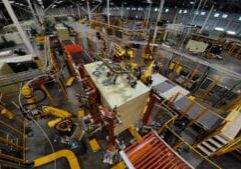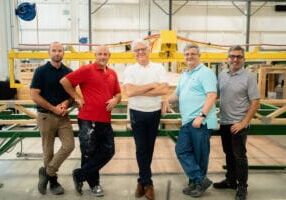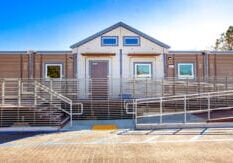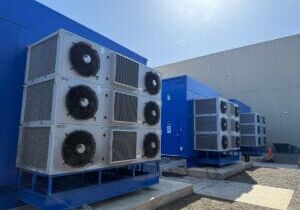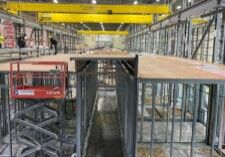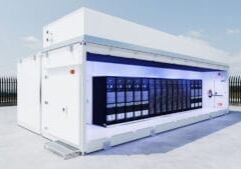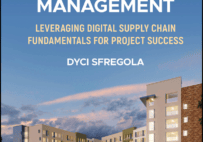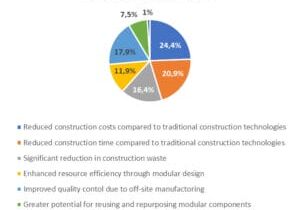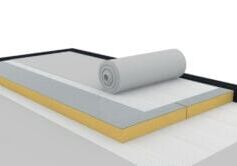Modernizing the Construction Sector

Dyci Manns Sfregola, CSCP, MS, is the founder and Managing Director of New Gen Architects.

Sneha Kumari, MBA, Six Sigma, is the Manufacturing Principal at New Gen Architects.
Just as the retail and manufacturing sectors transformed themselves with digitization and automation to greatly improve lagging productivity, the construction sector must do the same. Here’s an argument that supports the case for modular construction in pursuing greater productivity:
Parts of the industry could move toward a manufacturing-inspired mass-production system, in which the bulk of a construction project is built from prefabricated standardized components off-site in a factory. Adoption of this approach has been limited thus far, although it’s increasing. Examples of firms that are moving in this direction suggest that a productivity boost of five to ten times is possible.
Source: Reinventing Construction Through A Productivity Revolution
Navigating the path to a modernized construction sector has been a challenge for most firms. But thanks to supply-chain experts like New Gen Architects and Dyci Sfregola, CEO, and Sneha Kumari, Principal Consultant, leading modular construction firms are currently improving supply chain management and seeing productivity growth.
Prior to starting New Gen in 2020, Sfregola worked for other firms and smaller companies would regularly approach her about accessing consulting services. However, the firms she worked for did not service small and medium businesses. This led her to found New Gen Architects in 2020 with the goal of providing value-added quality digital consulting and advisory services to SMBs.
“I spent a lot of time on sales calls where we essentially told companies that they were too small to work with us,” she noted. “You can’t work with everyone. But what I then saw is that there wasn’t someone with a lot of experience and really driving a lot of the best practices at that mid-market and small business level.”
At that point, Sfregola had the idea for a new firm that serves smaller companies. “I really wanted to create New Gen to provide the same service and the same quality of service for the mid-market and small businesses.”
As NGA developed into a supply chain consulting firm heavily focused on tech, Sfregola talked with Kumari about “an intelligent shop floor and project management tool she was working on for prefab and modular companies,” Sfregola said. With her supply chain experience and expertise, Kumari was a natural fit for NGA, enabling the company to “provide value to the industry from both a technical and business process perspective.”
By that point, Kumari had been working as a supply chain manager for roughly a decade for large corporations like Honeywell and Schneider Electric. In performing ERP (enterprise resource planning) implementations for those companies, she was exposed to home automation products, in addition to manufacturing and retail e-commerce concepts. She also has a background with lean processes, Six Sigma, and Kaizen, the Japanese business concept of continuous improvement for all employees and company processes.
Those clients introduced her to the construction sector and its need for more technology tools. “I was working together with the customers and understanding how the processes work,” Kumari said. “What are the gaps? Then I saw the gap and also an understanding of how to work in a project-based business, and how to be able to use the tech tools for your processes to see that productivity come through and improve your bottom line while also focusing on sales.”

Dyci Sfregola and Sneha Kumari pose in their New Gen Architects office.
Another key factor for New Gen is learning why a company continues to follow “outdated” or under-productive processes. It’s easy to conclude from an outside perspective that they’re doing it wrong, Sfregola noted. “I think that most people are very intelligent. And it was the least bad choice of the bad choices.” Figuring out the why is Kumari’s superpower, Sfregola added. “The analysis and the value-stream mapping and really figuring out ‘What are you doing now and why is that happening?’ And then I can say ‘Okay, now what technologies can we layer on to that to enable whatever process improvement?’ So we play off each other very well.”
Supply Chain Engineering: The Magic of Systems
Supply chain engineering is the overall process that maximizes the performance of a company’s supply chain while minimizing costs. It aims to improve the efficiency and effectiveness of the flow of more than just product, though. It’s effective at improving flow for information and services, too.
“Supply chain engineering is actually you really getting your hands dirty,” Kumari said, “getting into the processes, going at the level of the user, the doer, whoever is part of that process, mapping it out. I think a lot in terms of problem solving.”
In addition, she considers how to use the technology tools at hand to get the desired ROI. She also uses tools like Lean Six Sigma to evaluate the current state of processes, and also considers all these factors in relation to the company’s strategic goals. “Managing this change is supply chain engineering to me, and it’s a holistic view instead of just working in silos,” she said.
Sfregola likens the engineering functions to having “boots on the ground,” and New Gen’s architecture functions to the “30,000 foot view.” “The architecture is thinking about the entire big picture of all of the things that the supply chain also touches outside of the supply chain function,” she said. “Your finance, your marketing, your sales, your customer, thinking about what your customer is going to want, thinking about how employees are now going to interact in order to provide what the customer wants, and architecting that in a way for the engineers to then go and execute. The architecture is the high level and then the engineering is the actual boots on the ground, executing on what the architects have designed.”
"Supply chain engineering is actually you really getting your hands dirty, getting into the processes, going at the level of the user, the doer, whoever is part of that process, mapping it out. I think a lot in terms of problem solving.”
— Sneha Kumari, Manufacturing Principal, New Gen Architects
How Modular Constructors Can Optimize Using Supply Chain Engineering
Modular construction is sort of a hybrid, Sfregola said, with elements of both manufacturing and construction. “It’s a unique cross of two industries and honestly not like any other industry I’ve worked with in the past,” she added. It’s also a relatively young part of the construction sector, with great opportunities to learn from more mature industries that have already optimized with automation and digitization, to name just two examples.
Common mistakes Sfregola sees from modular constructors include continuing with manual execution and planning, which hinders the growth of scale and creates the inability to meet demand. “That’s the biggest mistake I see,” she noted, “not investing as much, if not more time, energy, and resources in supply chain and ops.”
A positive step for growth and operational excellence she typically recommends is embracing documentation for current processes and their network. “It never ceases to amaze me how many people just don’t know what’s happening and the visibility into what everyone is doing,” she said. Getting into the gritty details of everything is the way to optimize and grow.
“Just documenting, not even doing the exercise of identifying the ideal state, just only documenting the current state,” Sfregola said. Crucial questions include: How long does it take you to get paid? How long does it take you to pay people and what are the steps involved?
“It provides a lot of insights into unnecessary and redundant spin. And then when you’re ready to automate…then you already have all of this documented to be able to give to a [software] vendor and they can give you a realistic estimate on how long it’s going to take them to now automate, customize, and develop.” Without documentation, she emphasized, you’ll get a vendor bid for technology tools that is simply inaccurate and of little value.
Working With New Gen Architects
NGA will step in to consult at pre-implementation, during implementation, or post-implementation, Sfregola said. Ideally, a company contracts NGA early on to help them realize the successful adoption of the technology tools according to plan.
That path is unusual, though. “What happens more often than not is that they call us during the implementation” because they’ve hit some snags, such as not having their documentation in place, and/or not having qualified people in place to implement.
“So at that point, it’s minimizing the level of dumpster fire that is going to happen at go live because it’s gonna be a dumpster fire. You can see all signs lead to dumpster fire at this point,” she said.
Due to the choices that people make, such as forgoing documentation, their technology implementations do poorly. “The vast majority of technology implementations fail,” she added, “in that they don’t meet the ROI that they are expected to provide for companies. It’s like 70% or 76%...a very, very large number. So, when I was doing technology implementations, I was able to see why that was the case. And a lot of these are preventable. Things that we can fix from the very beginning to not cause these issues.”
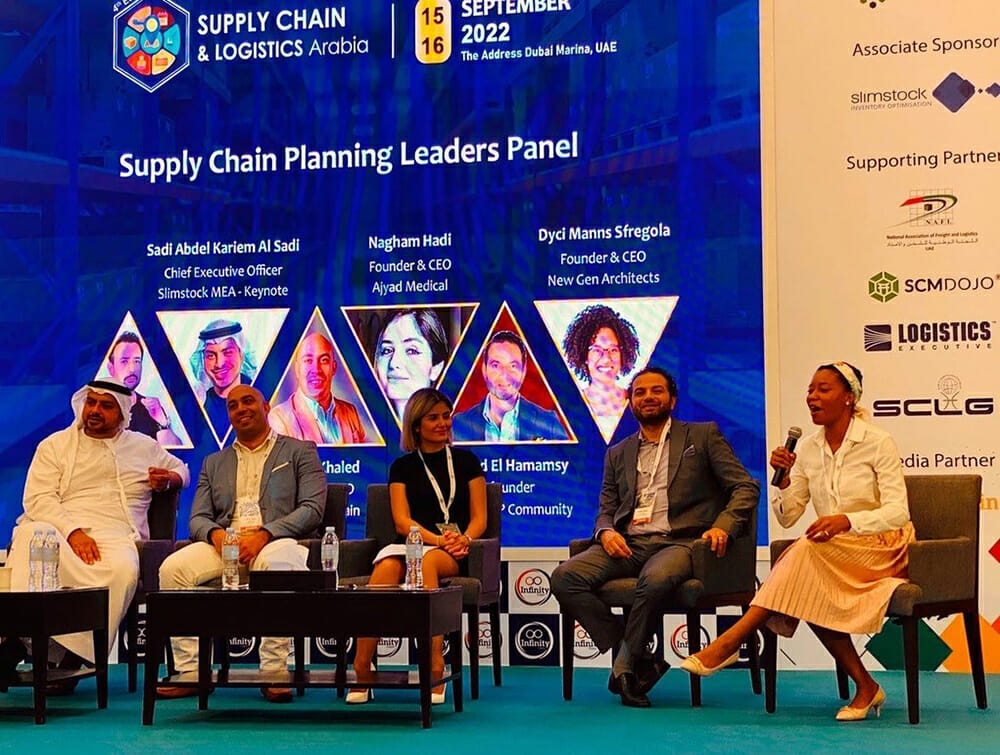
Dyci Sfregola speaks during the Supply Chain Planning Leaders panel at the 2022 Supply Chain & Logistics Arabia conference in Riyadh, Saudi Arabia.
New Generation at World of Modular
Both Kumari and Sfregola will speak at World of Modular 2023 in Las Vegas. Kumari will focus on lean concepts, Six Sigma, and continuous improvement tactics that modular constructors can readily implement to optimize their processes and develop best practices. Her presentation will offer examples of tech tools that more mature industries have implemented, as well as specific action items.
Sfregola’s presentation will focus on leveraging supply chain functions to scale a business intentionally and intelligently, developing operations and the supply chain into a competitive advantage. In addition, she’ll address appropriate technology tools for modular constructors.
About the Author: Steve Hansen is a Colorado-based writer with a focus on the built environment—architecture, construction, renewable energy, and transportation. He can be reached on LinkedIn.
More from Modular Advantage
Resia: Breaking All the Rules
Resia Manufacturing, a division of U.S.-based Resia, is now offering prefabricated bathroom and kitchen components to industry partners. Its hybrid fabrication facility produces more precise bathroom and kitchen components (modules) faster and at lower cost than traditional construction. Here’s how Resia Manufacturing does it.
How LINQ Modular Innovates to Bring Modular To The Market in the UAE and Beyond
LINQ Modular, with an office and three manufacturing facilities in Dubai, is a modular firm based in United Arab Emirates. The company is on a mission: to break open the housing and construction markets in the Gulf Cooperation Council (GCC) area with modular.
ModMax: Redefining Modular Construction with Confidence and Precision
ModMax was born out of frustration—frustration with five persistent pain points in modular construction: Permitting bottlenecks. Production delays. Rigid designs. Disconnect between “the office” and the field. Lack of transparency and communication.
LifeArk: Disaster-Resilient Housing from Recycled Plastic and 100-year-old Technology
Wee compares LifeArk’s housing units to Yeti coolers, as they are built similarly. Each component takes 15 to 20 minutes to manufacture, has an R-value of 40, and includes molded slots and chases for wiring, plumbing, fire sprinklers, and other utilities.
Building the Future of Modular Edge Infrastructure
The edge data center market is expanding rapidly, driven by the surge in AI workloads, IoT adoption, and the need for localized compute power. In these environments, sustainability, scalability, and reliability are non-negotiable. Cooling is among the most complex challenges for operators—and one of the most decisive factors in long-term success.
Accelerating Light-Gauge Steel Construction: A Semi-Automated Digital Workflow for Off-Site Projects
For construction professionals, the message is clear. By adopting semi-automation and digitalization, companies can deliver projects faster, more accurately, and more profitably, while also building stronger collaboration across teams. The approach is not about replacing people with machines, but about empowering people with better tools and processes.
Why Modular Data Centers Are Gaining Momentum
Artificial intelligence, high-performance computing, and edge applications push the limits of traditional “stick-built” data centers. They take years build, often struggle with high density workloads, and aren’t optimized for deployments near end users. Modular data center platforms are purpose-built to address these challenges, offering flexibility and scalability to adapt to evolving technologies, while opening new opportunities for the modular construction industry.
Supply Chain Innovation in Action: 5 Habits Every Modular Leader Should Practice
By applying these principles to supply chain practices — collaborative planning, strategic procurement, scenario modeling, digital tools, and transparent forecasting — construction leaders can build value chains that are not just efficient and agile, but truly innovative.
Exploring the Role of Modular Integrated Construction (MiC) in Advancing Circular City Principles – A Survey of Stakeholder Perspectives
The survey findings highlight the significant potential of Modular integrated Construction (MiC) in advancing the development of circular cities. By reducing costs, accelerating construction timelines, and minimizing waste generation, MiC offers a promising approach to sustainable urban development.
The Use of MS POLYMER™-Based Sealants and Adhesives in Modular Building
These products combine flexibility and elastic recovery with excellent adhesion to different substrates and have already shown their usefulness in traditional construction. Now it’s time for them to be put to use in the modular construction industry.

